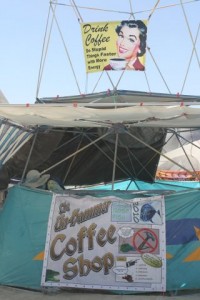During the past several decades, the loss of jobs in the manufacturing sector have sapped the vitality of US cities. While a few cities such as New York City and San Francisco have been able to rebound, others have not. One revitalization approach calls for building amenities that will attract tourists and consumers; this approach supposedly creates jobs, initially in construction and then in the service sector, and is believed to bring in a revenue stream based on consumption. Sociologists John Logan and Harvey Molotch point out how a focus on increasing real estate values underpin this approach; political and corporate interests drive this urban growth machine. In practice, investments in venues such as sporting stadiums can be high-risk for residents, particularly when large projects worsen rather than improve a city’s fortunes, as this July 12th “A Stadium’s Costly Legacy Throws Taxpayers for a Loss” WSJ article outlines.
In his Rise of the Creative Class book, sociologist Richard Florida argues for another approach – that attracting creative professionals, such as artists and software programmers, is crucial to revitalizing cities. However, according to other researchers like geographer Julian Brash, this approach pits cities in a zero-sum game in which cities compete against each other for resources.
Others have since researched the roles that existing arts and cultural organizations and other collectivities play in revitalizing cities. For example, a new book by University of Michigan sociologist Frederick Wherry‘s The Philadelphia Barrio: The Arts, Branding, and Neighborhood Transformation (2011, UChicago Press) examines how local arts organizations and small businesses can take collective action to reinvigorate neighborhoods.
Similarly, in a forthcoming article, I explore how the Burning Man organization and off-shoots, such as the Burning Man regionals, local art projects, and Burners without Borders, establish a context that could stoke the creativity of a wider range of persons (i.e., not just trained professionals) at Black Rock City and other localities. “Lessons for Creative Cities from Burning Man: How organizations can sustain and disseminate a creative context” is in press at the peer-reviewed journal City, Culture and Society.



